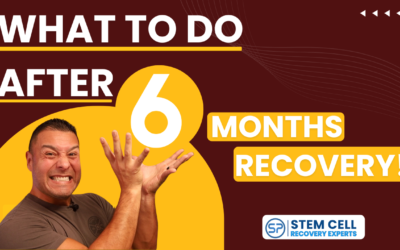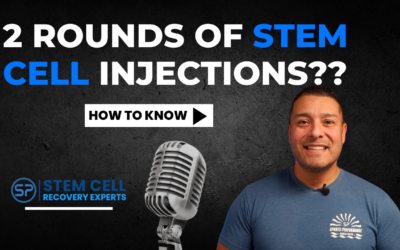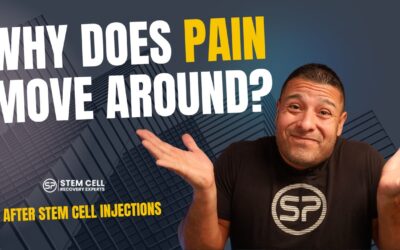“Why Is Knee Stem Cell Therapy So Painful?”
When it comes to stem cell therapy, knee recovery often stands out as particularly challenging. Many patients experience unique discomforts that they didn’t expect, especially when compared to other joints like the shoulder or hip. Understanding why the knee joint responds this way can help you better manage your recovery, set realistic expectations, and ultimately achieve better results. In this blog, we’ll break down why knee stem cell therapy can be so painful and what steps you can take to make the healing process smoother.
1. Why Knee Recovery is Different
After stem cell therapy, the knee doesn’t recover quite like any other joint. This is due to the knee’s limited space; unlike the shoulder (a ball-and-socket joint with more room), the knee joint is compact. When stem cells or any liquid are injected into the knee, it increases internal pressure significantly, causing immediate tightness and discomfort. This “locking” feeling is common and can be alarming, but it’s a natural response to the knee’s anatomy and tightness.
2. Tight Joint Space Increases Pain and Stiffness
Patients who undergo knee stem cell therapy frequently notice that, unlike injections in other joints, their knee feels stiffer and is harder to move. This is largely due to the tightness of the knee joint. When injected, the additional fluid creates even more pressure, making simple movements uncomfortable. For those with osteoarthritis, where joint space is already reduced, this effect is even more pronounced. That tight space means that even a little extra fluid can lead to significant pain and reduced mobility in the initial recovery period.
3. The Crucial First Two Weeks of Recovery
The period from zero to six weeks after stem cell therapy is essential, but the first two weeks are especially critical. During this time, you should focus on gentle daily activities without overexerting the knee. Avoid intense exercises or prolonged activity to give your knee joint the space and time it needs to adapt to the new treatment. Many people get frustrated because their knee feels more inflamed than expected. However, this reaction is typical, and taking it easy will help prevent flare-ups.
4. Gradual Physical Therapy for Improved Mobility
After two weeks, you can start introducing gentle physical therapy exercises to promote circulation and lubricate the knee joint. The focus isn’t on gaining strength; rather, it’s about maintaining gentle motion and blood flow to aid in healing. You might begin with low-impact exercises, like using a recumbent bike or doing light movements in a pool to reduce stress on the knee. These early exercises are vital in keeping the joint mobile without causing unnecessary strain or displacing the stem cells.
5. Patience is Key to Successful Recovery
One of the biggest challenges with knee stem cell therapy is the patience required for recovery. Due to the knee’s tight space and the constant compression it undergoes during daily activities, it can take longer to heal fully. Many patients expect a quicker recovery, especially if they’ve had other joints treated successfully. However, by understanding the knee’s unique needs and working with a qualified physical therapist who specializes in stem cell recovery, you can avoid common pitfalls and set yourself up for long-term success.
Need More Guidance?
For more resources or assistance with your recovery, feel free to contact the Stem Cell Recovery Experts who specialize in stem cell rehabilitation. For more recovery tips and long-lasting results, feel free to call us (619-397-1391). We’re here to help!
If you found these tips helpful, don’t forget to subscribe to our YouTube channel (CLICK HERE) for weekly updates on how to recover safely and effectively after stem cell therapy.
If you’re a visual learner, check out the YouTube video I created on this topic:
Sincerely,
Dr. Chris Garcia, PT, DPT, SCS, CSCS, USAW

“Dr. Chris Garcia is the world-renowned expert on stem cell recovery, internationally recognized public speaker, and trusted advisor to physical therapists globally.”
What To Do After 6 Months of Recovery from Stem Cell Therapy
"What To Do After 6 Months of Recovery from Stem Cell Therapy"Are you approaching six months post-stem cell injections and wondering what’s next? Many people are uncertain about whether they need to continue any specific recovery steps. Let’s break down what you...
How to Decide if You Need Another Round of Stem Cell Injections After 6 Months
"How to Decide if You Need Another Round of Stem Cell Injections After 6 Months"Stem cell therapy has become a popular solution for those seeking a natural alternative to surgeries and traditional treatments like cortisone shots or PRP injections. If you’ve had your...
Why Does the Pain Move Around After Stem Cell Injections?
"Why Does the Pain Move Around After Stem Cell Injections"If you’ve recently undergone stem cell therapy and are noticing random pain that seems to shift around your body, you’re not alone. Many clients experience this and wonder if it’s all in their head. Here’s the...



